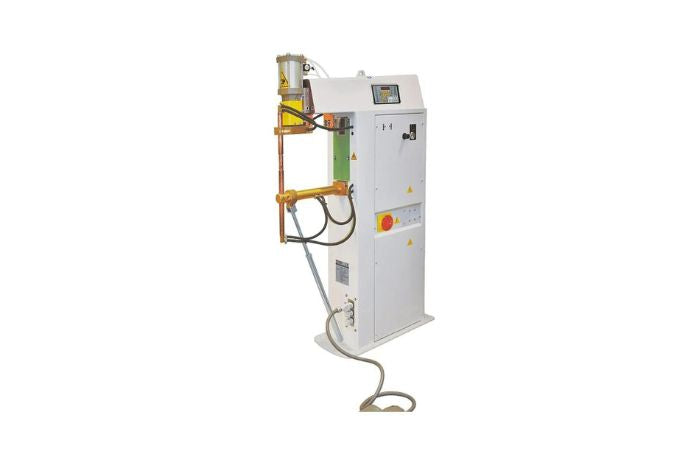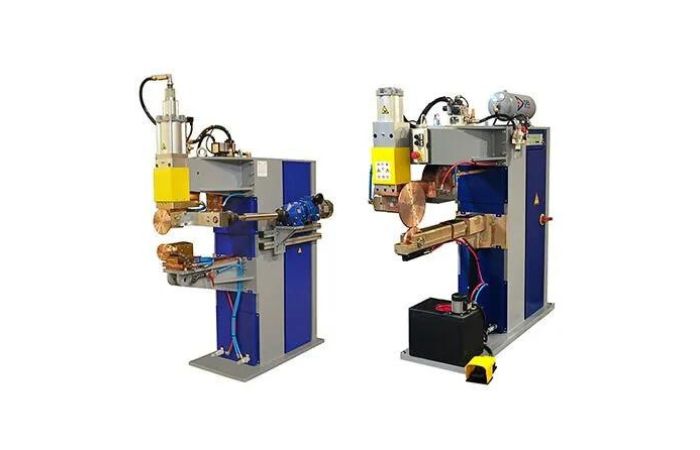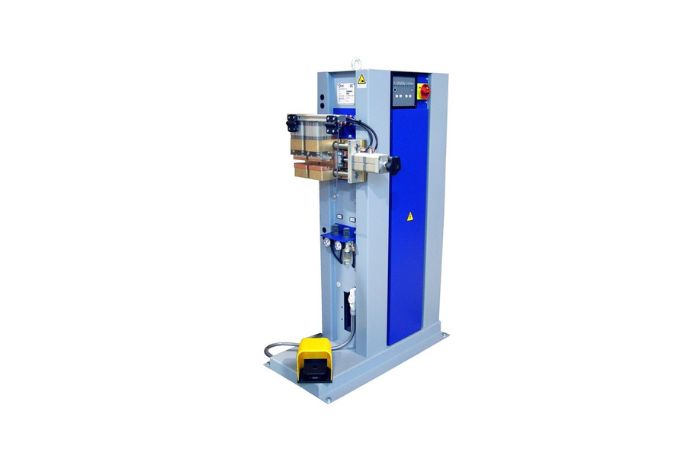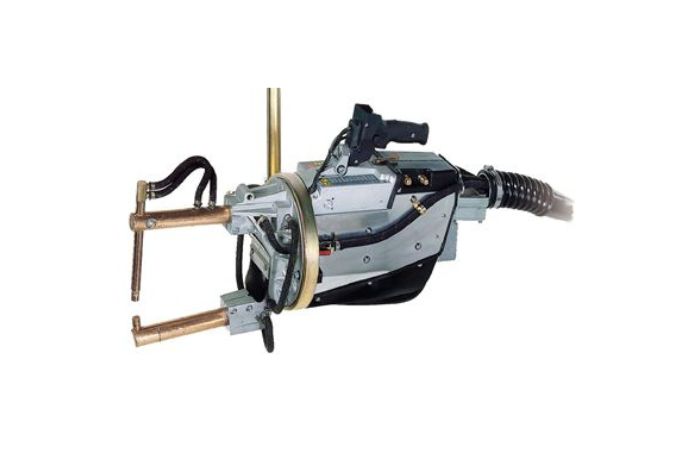Need Some Help? 0161 223 1843
Need Some Help? 0161 223 1843

March 13, 2024 5 min read
Spot welding machines vary in design and purpose, fitting different tasks and work settings. It's key to know what's out there to pick the best tool for your job. Let's dive into the main kinds of spot welding machines: Portable, Bench, Pedestal, Seam, Butt, Inverter and Robotic Spot Welders.

Handheld spot welders have been around since spot welding was invented early last century. Its one of the oldest forms of joining metals.
Portable are compact, and can be easy-to-carry and typically have a lower power output than their larger industrial brothers. Perfect for bringing along to job sites or fitting into tight workshop spaces. Due to their size, they are primarily used on these steel materials and were ideal for welding car body panels ( although that is not true for modern cars. See our post on Why Do We Weld to understand why? ).
They're great for small jobs because they are air-cooled, and this means the electrodes can heat up quickly. Useful in the auto and construction world where moving around is part of the job. Their main perks? Portable spot welders are all about flexibility and simplicity, welcoming users of all.

These are meant to stay put on workbenches. They pack more punch than their portable cousins and give you more control over your welding work as well as usually being water cooled. Being bench mounted they are generally used on production lines for spot welding small components together. Ideal for places that work with small to medium parts—think electronics, jewelry, or dental items.
Why Choose a Bench welder?
Their strong suit? Bench spot welders strike a nice balance between power and precision, making consistent welds easier for repetitive tasks. They fit easily onto work benches and are perfect for production welding whilst sitting down.

Bigger and beefier than bench models, these stand-alone machines mean business. They're set up on pedestals, making for a comfy working height. We have sold many of these types of welders into the wire work industry for manufacturing cards and seed display stands. They are ideal for wire work on mild and stainless steels. The arms ar generally extendable and panels upto 400mm wide can be accommodated. You'll see pedestal welders in the thick of it in industries like automotive, aerospace, and heavy manufacturing, tackling larger, tougher materials.
Why go for a pedestal spot welder?
Well if you looking for a reliable spot welder designed to perform hundreds of thousands of welds in its lifetime with repeatable quality the foot operated pedestal is the way to go.

Pneumatic operated spot welders are essentially the same as their pedestal operated sisters in that they share the same features and technical specifications. The addition of Pneumatics just enables easier operation in a production environment

Linear spot welders are pure production machines designed to give millions of welds in a lifetime and are extremelly reliable. We have installed 100s of Linear spot welders into aircraft, industrial and engineering companies.
Due to the nature of the piston being “linear” the squeeze pressure onto the material is more consistent giving better quality welds especially on stainless steel, aluminium and galvanised materials.
Linera spot welders usually have top of the range programmable controls which enables faster more repetitive welding for quality control.
Current an pressure measuring controls can also be fitted for even higher quality control.

What Are Seam Welders? Seam welders specialise in creating continuous welds along a seam or joint between two pieces of metal. Unlike spot welding, which fuses materials at individual points, seam welding creates a long, continuous weld. This technique is vital in ensuring leak-proof, strong joins over extended areas.
How Do They Work? Seam welders use a combination of pressure and heat, applied through rotating wheel electrodes. As the metal pieces pass between these electrodes, the welder consistently heats and fuses the material along the seam. The process is somewhat akin to sewing fabric, but with metal and using heat and pressure instead of thread.
Applications Seam welders are indispensable in industries requiring airtight or watertight seals in metal containers or tubes. You'll find them hard at work in automotive manufacturing (for fuel tanks, exhaust systems), HVAC fabrication (for ductwork, pipes), and in the production of kitchen appliances (like stainless steel sinks).
Advantages The main benefits of seam welding include its ability to create strong, continuous welds that are both aesthetically pleasing and structurally sound. It's also relatively fast and efficient, capable of handling high-volume production needs.

What Are Butt Welders?
Butt welders join two pieces of rod or wire end-to-end or edge-to-edge without any overlap. This technique is used to create a single, seamless piece from two separate parts. The method involves bringing the pieces together under heat and pressure until they melt
How Do They Work? In butt welding, the pieces to be joined are typically clamped and then either heated by an electric current or brought to a forge welding temperature. When the ends are sufficiently heated, they're pressed together, causing the metals to fuse as they cool. This method can be used with a wide range of metals and for various thicknesses.
Applications Butt welding is generally used in wire work applications in joining the ends of wire together to create a continuous loop
Advantages Butt welding's strengths lie in its ability to create extremely strong and uniform joints, with a neat appearance and without adding extra material or weight. It's particularly useful for constructing long stretches of piping or structural frames where integrity and strength are paramount.
Both seam and butt welders are integral to modern manufacturing, offering solutions to complex welding needs and ensuring that components meet strict quality and durability standards. Whether you're creating watertight seals with seam welders or crafting strong, seamless joints with butt welders, these tools are key to achieving precision and reliability in metal fabrication.

Advantages over Column Welders:
Industries:
Additional Points:
We have sold many of these types of welders for fencing manufacturers enabling them to go around the outside of the panel quickly and easily welding the mesh to the tubular frame.
Comments will be approved before showing up.